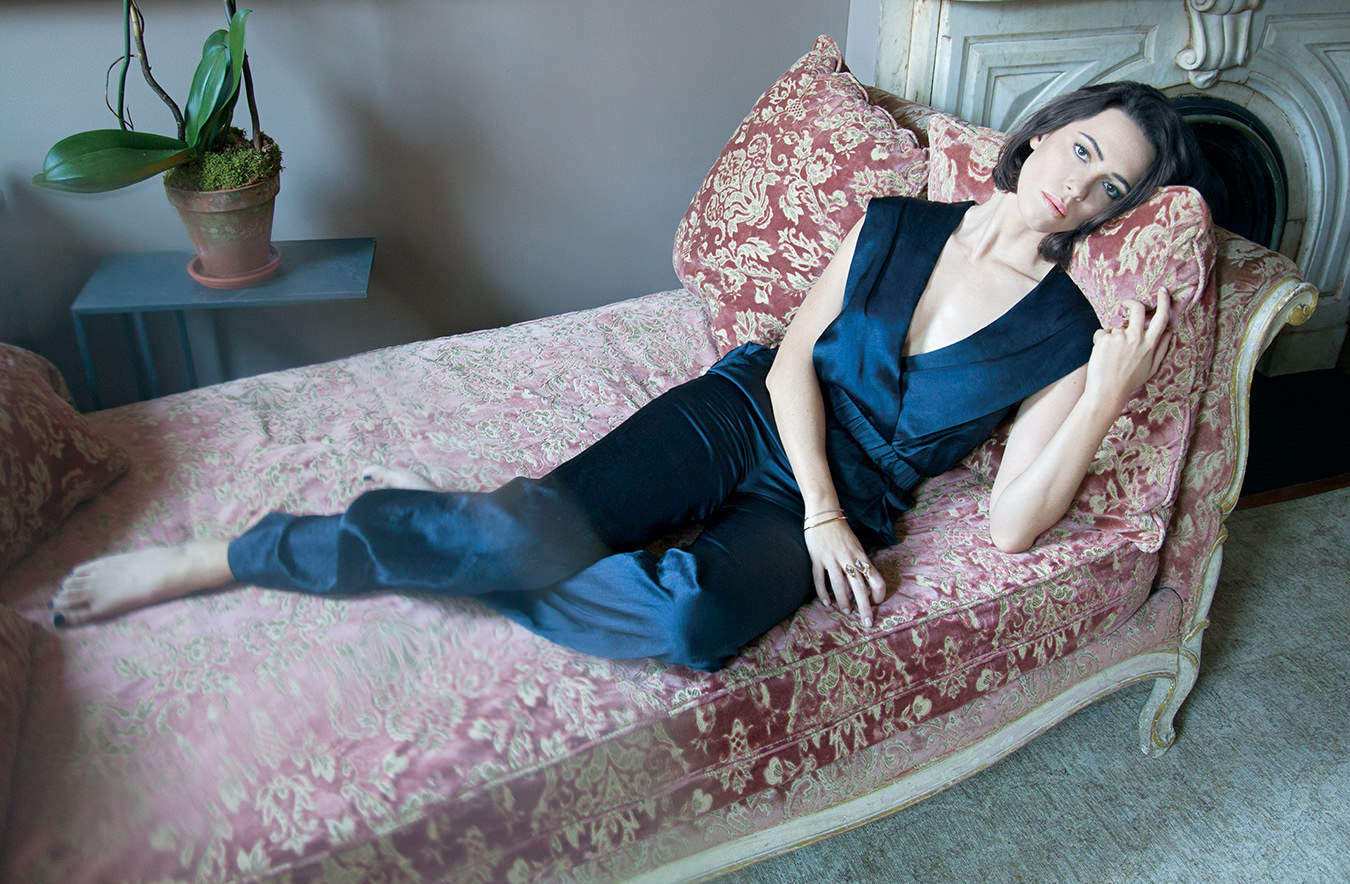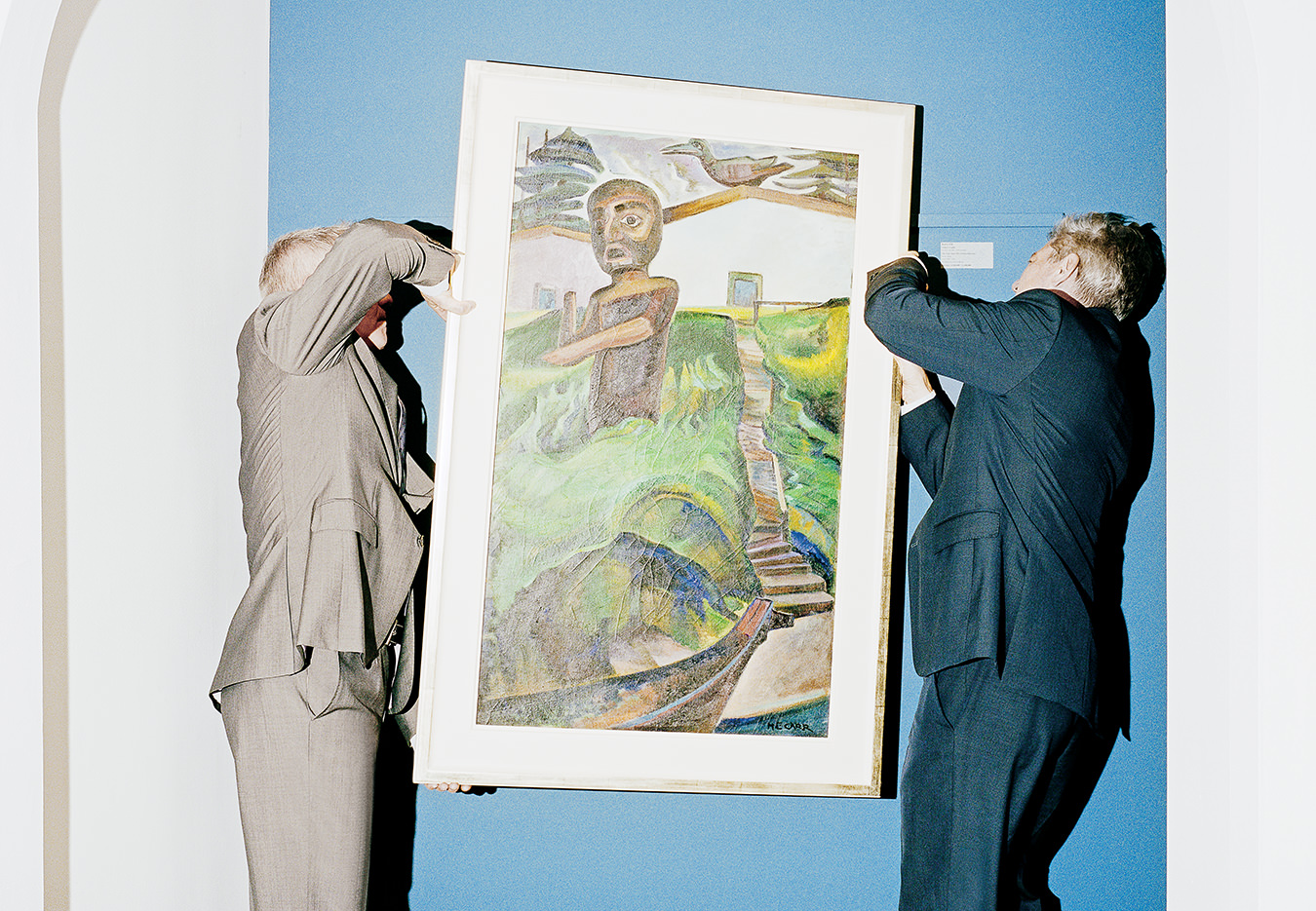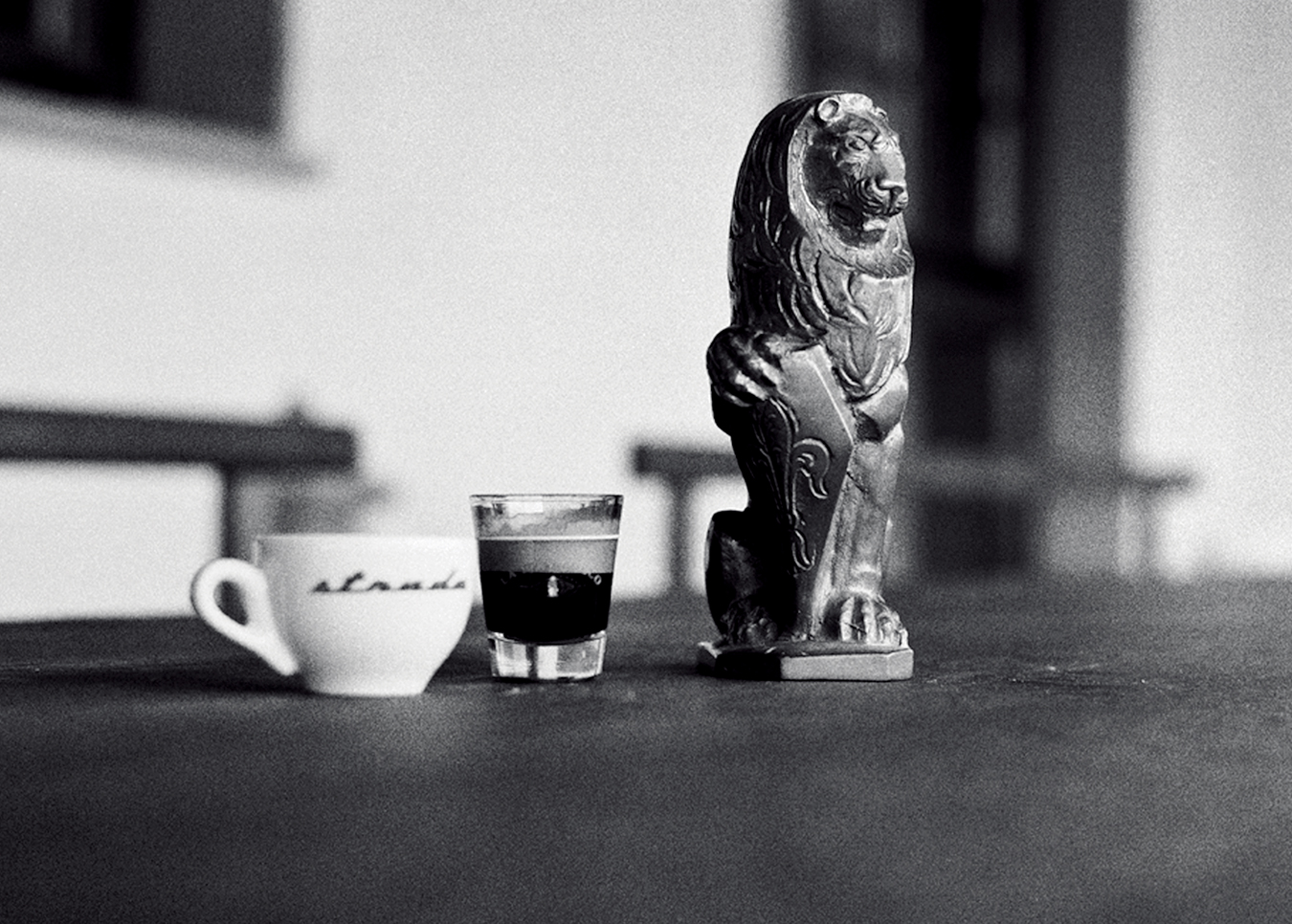-
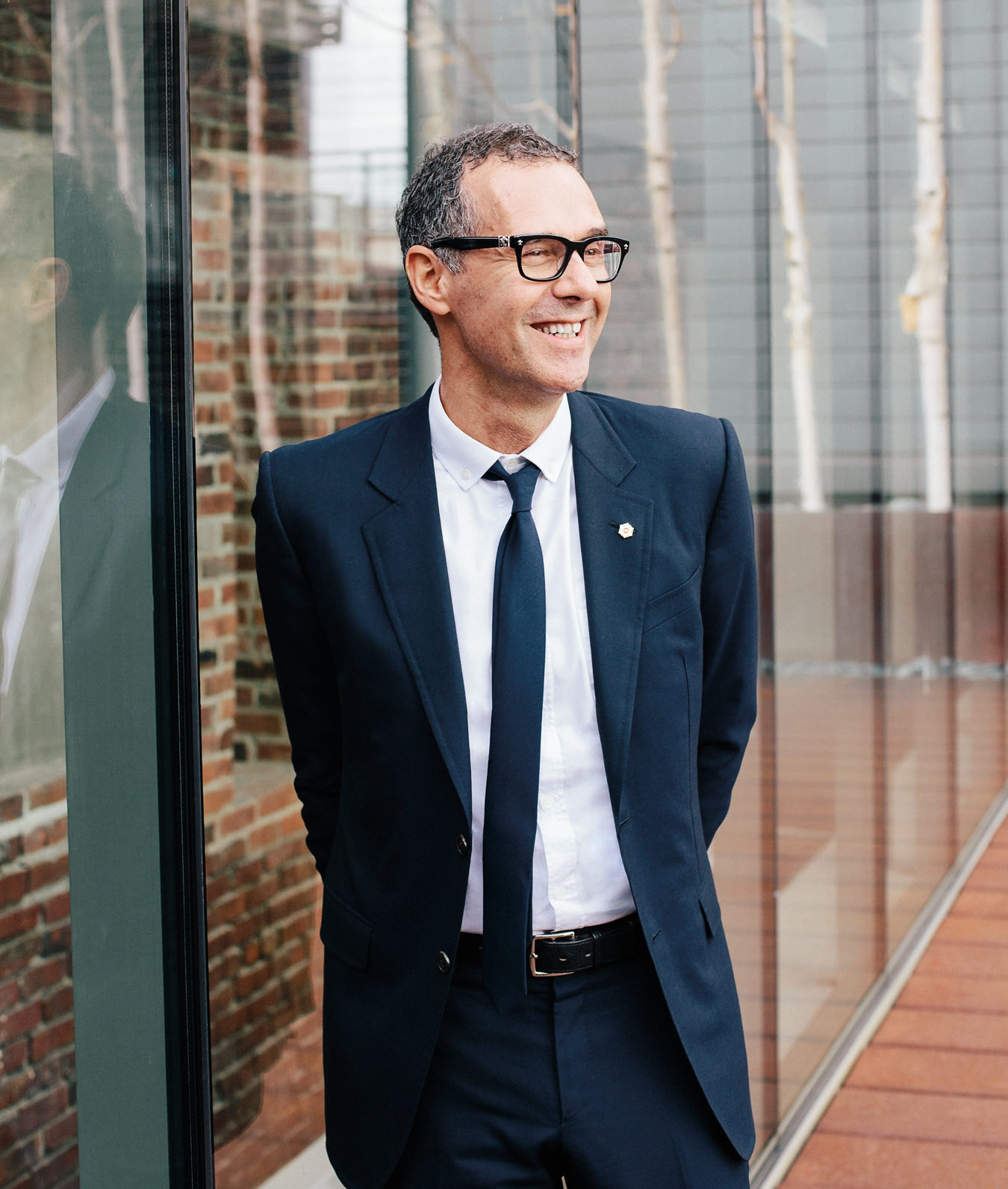
An ever-growing assemblage of art has marked Bob Rennie’s journey from working-class East Vancouver to the upper reaches of business, culture, and politics. Today, the Rennie Collection is considered one of the great compilations of contemporary art.
-
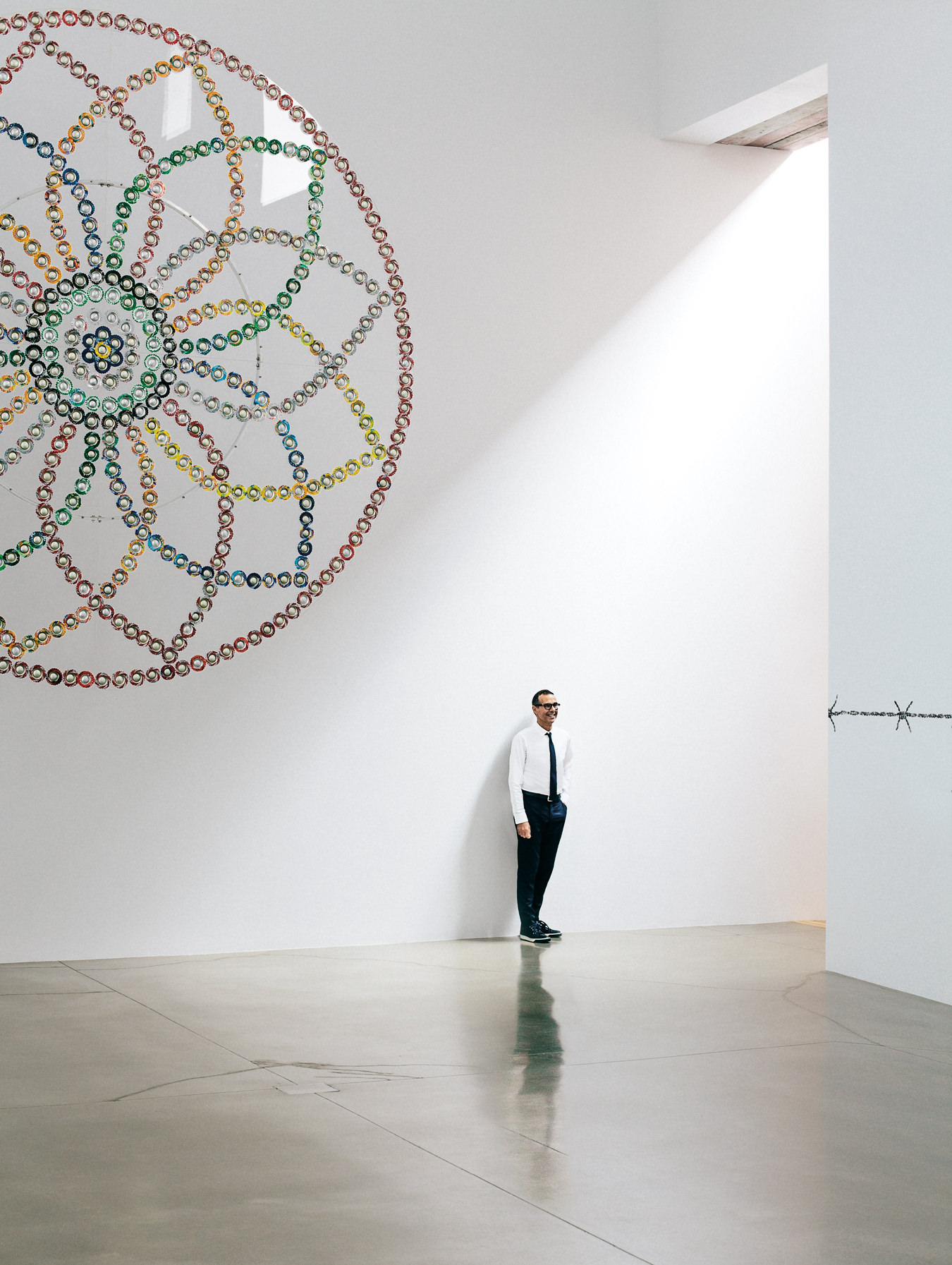
Bob Rennie at the Wing Sang building where the Rennie Collection is housed; detail of Mircea Cantor’s Rosace, 2007.
-
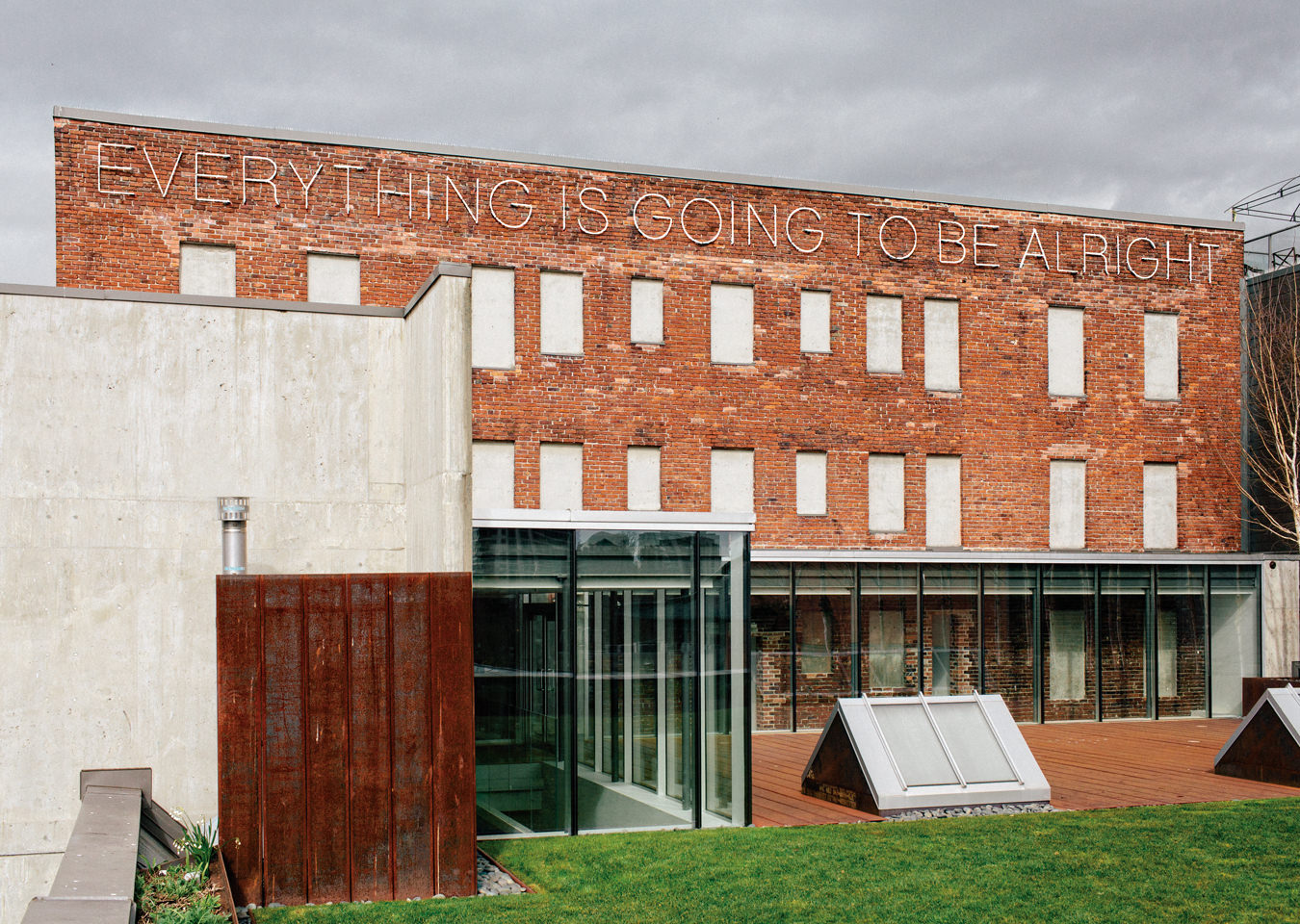
Martin Creed’s No. 851: EVERYTHING IS GOING TO BE ALRIGHT, 2008, runs the length of the Rennie Collection’s façade at the Wing Sang building in Vancouver’s Chinatown.
Bob Rennie
Art and empire.

An ever-growing assemblage of art has marked Bob Rennie’s journey from working-class East Vancouver to the upper reaches of business, culture, and politics. Today, the Rennie Collection is considered one of the great compilations of contemporary art.
Bob Rennie’s love of art and his passion for collecting were sparked on a trip to San Francisco in 1974. He was 18 years old. The son of a beer-truck driver and a sometime waitress, he quit Grade 12 at Vancouver Technical Secondary School and took a job with a stop-smoking clinic in Sacramento. One weekend he and a friend drove from the California capital to the Bay Area, where, in the Bersani Gallery, he saw an old Norman Rockwell print that romantically depicts young lovers. Called On Top of the World, the piece captivated him. “Utopia,” Rennie recalls. “A boy and a girl on top of the world, a place I wanted to be.” The price—$375—was daunting, but he later bought it by phone and had it shipped to Vancouver.
On that same visit to San Francisco, walking the city, he happened upon Melvin Belli’s office. Belli was a celebrated lawyer who acted for everyone from Zsa Zsa Gabor to Jack Ruby, and his office was a disorderly storefront. A maze of books and knick-knacks and courtroom skeletons, it served as a kind of museum. “I realized,” says Rennie, “that this was his way of documenting his own journey.”
An ever-growing assemblage of art has marked Bob Rennie’s journey from working-class East Vancouver to the upper reaches of business, culture, and politics. Today, the Rennie Collection is considered one of the great compilations of contemporary art. It includes more than 1,400 works: paintings, photographs, film, sculpture, and installations (one installation alone by Martin Creed comprises 1,000 paintings).
At any given time, a selection is on display at Wing Sang, the historic Chinatown building that Rennie bought in 2004 and converted, at a rumoured cost of $21-million, into a sleek, modern showplace. Two or three exhibitions are mounted each year at Wing Sang, with work owned entirely by the Rennie Collection. Other pieces are sometimes installed in the striking 4,600-square-foot living space he shares with his partner, Carey Fouks, in Kitsilano. Further pieces are on loan to museums and travelling exhibitions, and the bulk is stored in warehouses off-site, including the 12,000-square-foot, climate-controlled space we are currently touring.
Moving down the aisle, Rennie offers stories about some of his favourite pieces while two assistants move huge, crated works with a forklift. “When do you realize you’re a collector? I used to think it was when your walls were full and new acquisitions sat on the floor. A storage warehouse is also a hint. But now I think it’s when you realize that the journey has no end.”
Rennie’s stature in the art world is such that he chairs the North American acquisitions committee of the Tate Modern in London. When Sir Nicholas Serota, that museum’s director, visited Vancouver a few years ago, Rennie threw an elegant dinner party for him in the roof garden atop Wing Sang. The guest list included the city’s important artists, collectors, politicians, and philanthropists, everyone from Michael Audain and Michael O’Brian to Charles and Elizabeth Diamond. (Rennie will step down from the Tate Modern once its new addition opens, and has been approached by the Art Institute of Chicago about joining its board.) Serota calls Rennie “among the most knowledgeable and passionate people I’ve come across in the contemporary art world.”
His success marketing Vancouver real estate has allowed Bob Rennie to put together one of the great collections of contemporary art.
The money that funds this passion comes from Rennie’s business success. Soon after borrowing $64 from neighbours to pay for the shipping of that Norman Rockwell print, he joined Canada Permanent Trust. Feeling less educated than many of his fellow agents, he resolved to outwork them. At birth, Rennie lost most of the vision in one eye by the obstetrician’s forceps; he tackles all that he undertakes with a fierce, monocular focus. “I worked literally from 7 a.m. to midnight, six days a week.”
It paid off. In his first year, he made $55,000, a princely sum for a 20-year-old living in the basement of the family’s 800-square-foot bungalow. A couple of years later he cracked $100,000. His parents’ marriage was vividly unhappy (“My mother left my father 17 times, and usually took the furniture”), and from an early age he’d acted as a broker between them. “I was the one who remembered to pay the bills. After my mother met someone, I was the one who said to her, ‘You have to tell Dad. This changes things.’ ”
As a realtor, Rennie mediated skilfully between buyers and sellers, steering clients toward properties he thought he could resell. He focused on finding homes on 66-foot lots, which could be subdivided, and selling them to developers; he knew they would tear down the old homes, build new ones on the 33-foot lots, and ask him to sell those—to people who would then have old homes to sell. “I could see a revenue stream,” he says. “I was the king of the 66-foot lot.”
He also understood the power of marketing, and of a distinctive brand. “Most of what I earned went back into developing my business. Each time I made a sale, I’d send out 10,000 direct-mail pieces: ‘I just sold the Smiths’ house at such-and-such East Fifth for $38,000.’ That’s a lot of stamps and envelopes. I even used raised lettering, because no other realtor was doing that.”
In 1977, he married his childhood sweetheart, Mieko Izumi; they have a son and two daughters. He and Izumi separated amicably in 1992. Meanwhile, as the real-estate commissions piled up, so did the art. In the early days he bought work by the Group of Seven, Ken Danby, Guido Molinari, and Alex Colville. And he moved into condo sales just as Vancouver was acting on the need for housing density.
“After we founded Rennie & Associates in 1988,” he says, “we lost $20,000 a month for the first three years. We were spending it on marketing.” By 1990, they had captured one-third of the market share in Burnaby, and things just kept getting better. Rennie has marketed most of Vancouver’s landmark projects over the past 20 years, from One Wall Centre and the Fairmont Pacific Rim to the Shangri-La and the Vancouver Olympic and Paralympic Village. Last year, Rennie’s team racked up sales of $1.5-billion.

Bob Rennie at the Wing Sang building where the Rennie Collection is housed; detail of Mircea Cantor’s Rosace, 2007.
Those numbers enable him to continue a regular acquisition program. It’s more an act of love than an investment strategy. Art is an asset class, as Rennie told an audience in New York recently, but it’s an erratic one. “We had 10 Andy Warhol soup-can prints from 1962,” he recounts by way of example. “In 2000, we sold them for $75,000 and bought a painting by Glenn Brown for $58,000. A couple of years later, the soup cans sold for almost half a million. Glenn’s painting was probably worth what we paid for it. Today, 15 years later, those Warhols might be worth $1-million. The Glenn Brown is worth $8-million. Who could ever have predicted that?”
Art is not all that Bob Rennie collects. He also collects data, almost obsessively, as he does most things.
Art is not all that Bob Rennie collects. He also collects data, almost obsessively, as he does most things. Rennie Marketing, a sibling company to Rennie & Associates, employs 36 people, comprising development administration, risk management, conveyancing, data analysis, and project marketing specialists. “Ever since I started in real estate,” he says, “I’ve tried to have a rational basis for my decisions, based on as much reliable information as possible. Everyone’s entitled to their own opinion, but everyone’s not entitled to their own data.”
His “data crazy” approach, as he calls it, gives him unrivalled insight. Each spring, the Urban Development Institute luncheon in Vancouver draws a who’s who of planners, developers, realtors, and bankers. For the past 12 years, Rennie has delivered the keynote. It’s an up-to-the-minute snapshot: a demographic breakdown of who’s buying what type of property, where, why, and for how much; and of how those patterns will shift in future.
Before and after his UDI talk, he works the room with a politician’s easy intimacy. A hugger, he has a gift for turning transactional encounters into deeper relationships. Close to a thousand people attend, and many would say they are not only Bob’s colleague, or client, or acquaintance, but also his friend. His success is partly a testament to this social genius.
Rennie’s connections run deep in both business and government. He does his own political polling, which makes him hugely valuable to Vision Vancouver and to the provincial Liberals. An unwavering Christy Clark supporter (even when other polls were predicting an NDP victory in 2012), he serves as the party’s fundraising director and has been so effective that the Liberals may soon find themselves debt-free for the first time in memory.
Just how influential is he? David Aisenstat, owner of the Keg restaurant chain, says, “Would Gregor Robertson have been elected mayor without Bob’s support? Perhaps. Would Christy Clark have been elected premier? Probably not.” Indeed, two days after the Liberals defeated Adrian Dix and the NDP, the premier unexpectedly took the stage at the UDI meeting to thank him publicly. And she later sent him a framed newspaper page announcing her victory. “To Bob, with thanks,” she wrote. “I couldn’t have done it without you. Love, Christy.”
Contemporary art, real estate, and politics may seem like very disparate pursuits, but Rennie braids them neatly into a singular life. As his agents move million-dollar condos, he works quietly behind the scenes on social housing and homelessness. Chauffeured about by his assistant, Sylvia Kim, fuelled by black coffee, constantly texting and e-mailing, he might zip from a lunch with a provincial cabinet minister, to welcoming the wife of the U.S. ambassador to Wing Sang, to drinks with the city planner, to dinner with the conceptual artist Marina Abramović. The next morning he rises at 5 a.m., and the carousel starts up again.
But for how much longer? This year marks Rennie’s 40th in both real estate and art. Approaching 60, he’s at the age when you realize viscerally that far more lies behind you than lies ahead. Questions of legacy grow less hypothetical, more pressing. Chief among them: what will ultimately happen to the Rennie Collection?
“Right now,” he says, “the estate planning is that there’s no obligation on my son and daughters to keep the art or to run a museum. When I’m 75, will some of the work want to stay in a foundation in perpetuity? Probably. We donated Brian Jungen’s Court, a half-million-dollar commission, to the National Gallery of Canada in Ottawa, and they kept it up for a year, which was great. More donations will take place. Sales will take place.”
In the meantime, the collection grows in depth and value. He prefers not to say what it’s insured for, but experts put the number at well north of $100-million. “A third of the work appreciates enormously,” Rennie said. “Another third will break even over time. And with one-third, you’ll never see your money back. You hope, when you’re buying an expensive work, that it fits in that first silo, but you won’t know for 15 or 20 years. The important thing is that all the work sits comfortably in the context of the whole. Each of the works speaks to the others.”
“Bob has a gift for identifying young artists early in their careers,” says Serota. “And he collects in depth, which is rare. He invests in an artist, not just a work.”
Ian Wallace is a case in point. Rennie made “many, many Saturday visits” to Wallace’s Vancouver studio, “to be in the company of greatness and to stay informed about an artist I wanted to collect.” Wallace, for his part, lauds Rennie’s “thorough and experienced investigation into the many complex directions of contemporary art.” He adds: “Bob and Carey Fouks and Wendy Chang [the museum director] have also established an excellent publishing program that supports the concept of the collection. What they’ve accomplished is superlative.” Rennie, he points out, has brought to Vancouver audiences “artists whose work should already have been seen locally.”

Martin Creed’s No. 851: EVERYTHING IS GOING TO BE ALRIGHT, 2008, runs the length of the Rennie Collection’s façade at the Wing Sang building in Vancouver’s Chinatown.
Wallace himself is certainly one; another is Rodney Graham, the photographer and filmmaker more celebrated abroad than at home. Graham, too, applauds Rennie’s steadfast commitment: “Bob is not afraid of difficult work. For me he’s been tremendously important, as the biggest collector of my work and as a knowledgeable friend.”
“Where were the museums?” Rennie asks, careful not to mention the Vancouver Art Gallery or its director, Kathleen Bartels, by name. The VAG has hired the Swiss architecture firm Herzog & de Meuron to design splashy new quarters in downtown Vancouver. “This is part of my outspokenness. All we hear about is the box. Why do we hear so much about the box and so little about what’s in it? I’m putting together a collection that uses no taxpayers’ money, and that has a thread running through it.”
“When do you realize you’re a collector? A storage warehouse is a hint. But now I think it’s when you realize that the journey has no end.”
That thread has to do with personal identity, social justice, and cultural appropriation, themes central to our time (and, of course, to a one-time closeted gay man in an interracial marriage). Serota greatly admires Rennie’s “ongoing social purpose,” mentioning in particular a work by the African-American painter Kerry James Marshall that Rennie recently acquired. A triptych, it hits all the marks. It speaks to racial identity, injustice, and appropriation. It includes text—“If They Come in the Morning”—that references an open letter by the writer James Baldwin to the activist Angela Davis. The three paintings are each eight feet by 18 feet, the dimensions of the Barnett Newman masterpiece Who’s Afraid of Red, Yellow and Blue. Hung one atop another, Marshall’s canvases—red, black, and green—form an oversized version of the Afro-American flag: an alternate reading of the Newman work, and another sly appropriation.
Amid all the acclaim, there are detractors, of course. When Rennie bought Wing Sang, a Chinese businessman told him bluntly: “We don’t want you here.” There was the predictable grumbling about gentrification. Some called him elitist for building a private gallery (in fact, you can register online for a guided tour during exhibitions). His audacious plan to have Ai Weiwei, the dissident Chinese artist, do a mosaic installation on the sidewalk in front of the building will almost certainly meet resistance.
Of his critics (most of whom hide behind web anonymity), Rennie says, “This is a passive-aggressive country. People who don’t do very much have lots to say about people who do things. The tendency is to look for what’s wrong, not for what’s right. I think by the time we get to 10 years”—Wing Sang has been open for nearly six years—“we’ll be accepted as just another part of the community.”
Like Melvin Belli’s cluttered storefront in 1974, Rennie’s third-floor office at Wing Sang reflects a keen and highly personal sensibility: special-edition white leather Eames chairs, exceptional twin tables by the American conceptual artist Sol LeWitt, little gifts, business documents, books, political mementoes, his parents’ framed memorial notices.
One recent morning, Rennie tucked his phone away, having just acquired five pieces by Lorna Simpson, an important African-American artist. “At one level,” he said, elated at having finally concluded the purchase, “this is just me documenting my journey through a time and place. But I believe it’s a responsibility to give back, and I hope that, when I’m gone, the collection will be recognized, and appreciated, as a civic gesture.”

